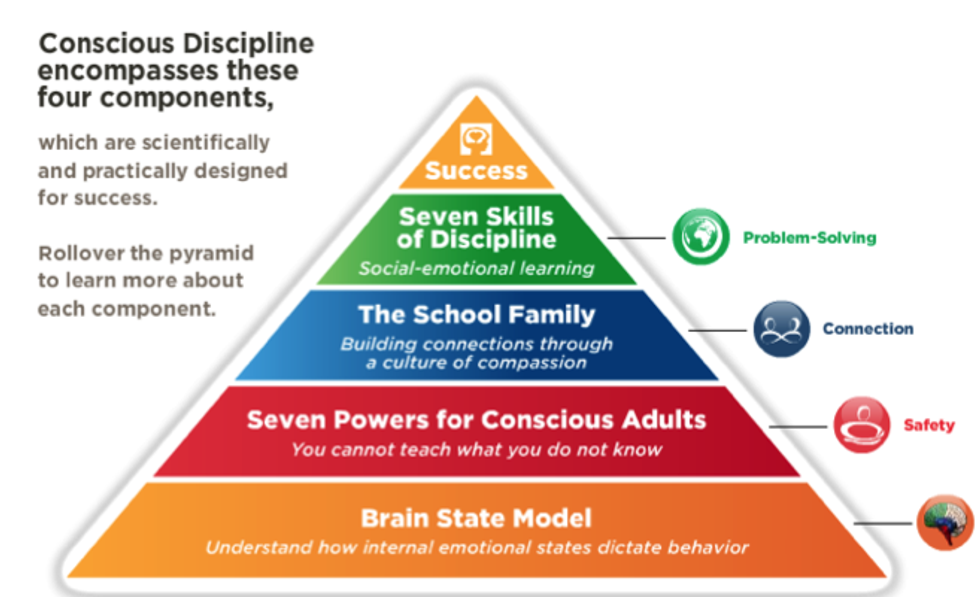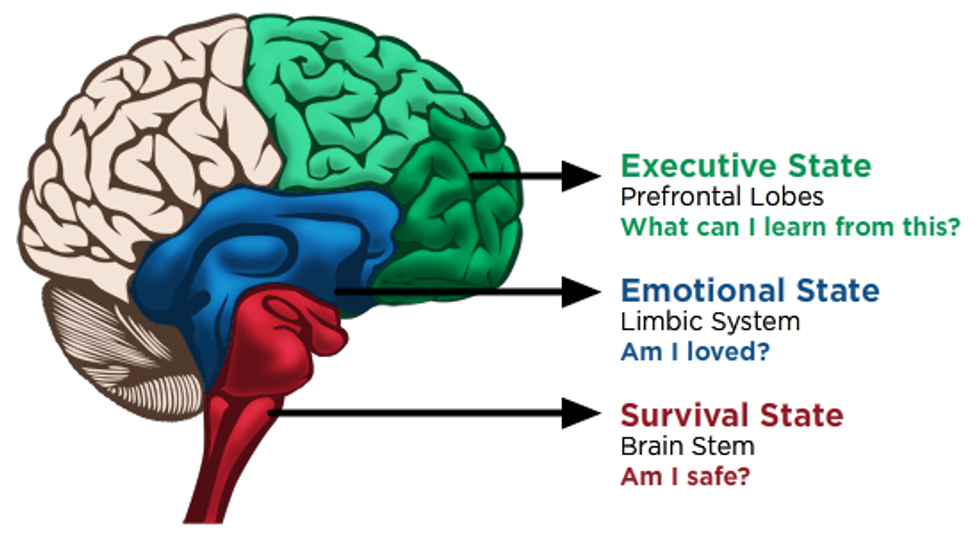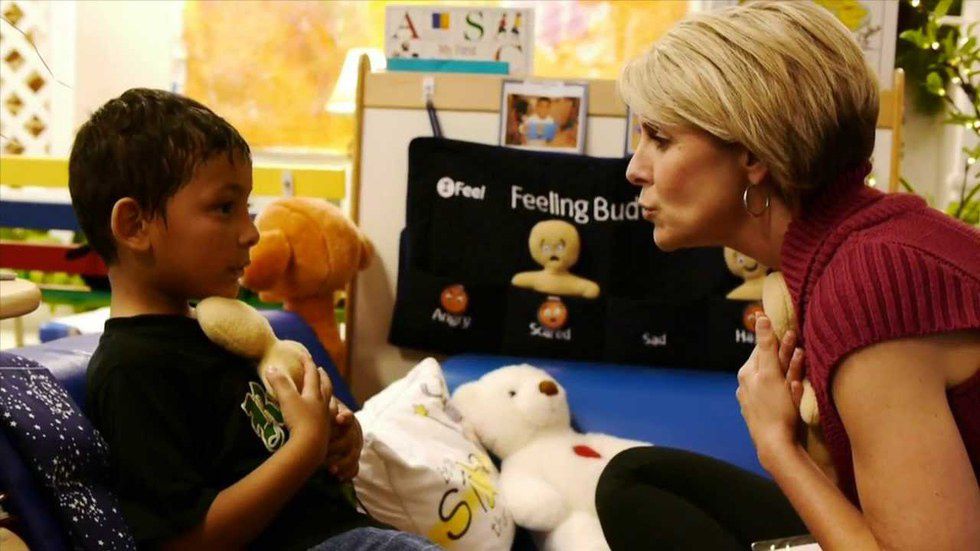Conscious Discipline is a new technique of teaching children how to self-regulate by harnessing their hierarchical social brain. The classroom management program was additionally named a national model for education by the Florida State Legislature. In "Conscious Discipline: Building Resilient Classrooms", Dr. Becky A Bailey defines the new process as “a comprehensive, multi-disciplinary self-regulation program that integrates social-emotional learning, school culture, and discipline.”
Recommended for you
The Conscious Discipline Model is built on the premise that every human being is a social creature; therefore, healthy relationships must exist as the foundation for learning. According to the model, our brains have three different states in which they can exist. The survival state is our most primitive part of our brain; it is where fight, flight, or freeze occurs and it is impulsive and reactive. The emotional state is activated when the world does not go as our past conditioning has taught us it should. In this state, the amygdala can either help or harm our reaction. The executive state is the state in which learning can occur because we are both relaxed and alert. In the survival and emotional state, the student is focused on self-defense and feeling safe and loved; therefore, they cannot focus on learning.
Safety is the primary goal of Conscious Discipline. Instead of “good” and “bad” behavior, teachers focus on safe or unsafe behavior. You can often hear a Conscious Discipline teacher say, “”My job is to keep you safe. Your job is to help keep it safe.” Traditional teachers may say, “You are having bad behavior today, go flip your card.” Labeling a child’s behavior as “bad” also labels the child “bad” to himself and others, as well as activates the lower centers of the brain where blame and punishment are the primary concerns. With a focus on assigning blame and enacting punishment, no actual solutions are achieved for either party.
As one example of how this model works, I will explain how a Conscious Discipline teacher would handle a disagreement between two children. Say one child hits another child and takes his/her marker. In this situation, if the child were 2-12 years of age and developmentally on target, the teacher might say to the aggressor, “Did you like it?” Then, the teacher would encourage the child who was hit to say to the other child, “I don’t like it when you hit me.” This way, the child who was hit is not a victim. Then, to the aggressor the teacher may say, “I noticed that you wanted the marker that he/she had. When we want something someone else has, we ask, ‘May I have that please?’ We may not push or hit because that is not safe.”
In this manner, both children are taught valuable skills. One child is taught how to be assertive and the other is taught how to self-regulate their emotions to achieve a desired goal. No child, however, is ever labeled “bad”.
Child using a feeling buddy to explain their emotions.
Images from: http://consciousdiscipline.com/





















